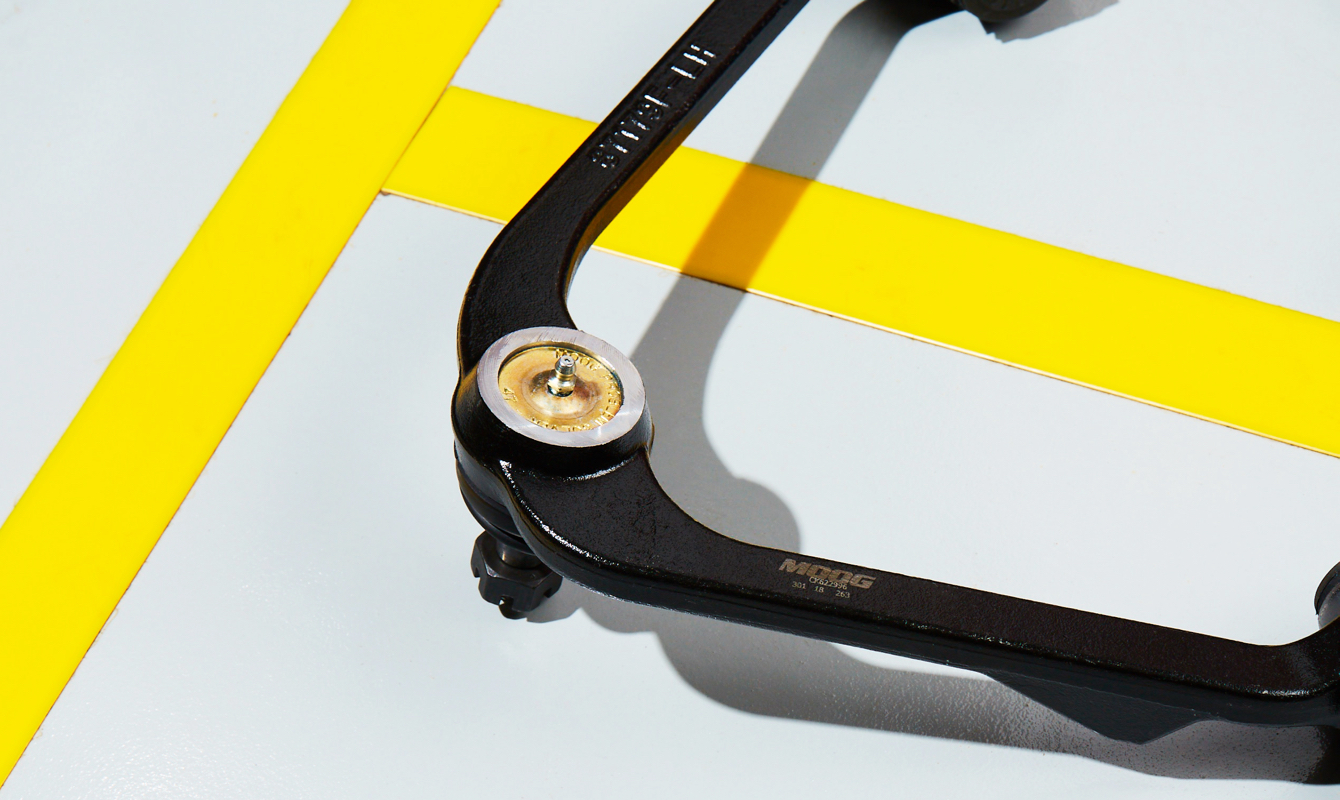What is a Control Arm and What Does It Do?
Critical to the ride, handling and steering of your vehicle, control arms are an important part of the steering & suspension system. Made up of a body, ball joint and bushing, the control arm connects to the vehicle frame with the bushing and attaches to the wheel via the ball joint. Control arms allow the wheels to move up and down to maintain contact with the road, this is key to ensuring that the vehicle moves smoothly while turning and travelling on the road.
Upper vs. Lower Control Arms
Control arms can be found on each side of the front of the vehicle, with many vehicles having an upper and lower control arm. Having two connection points ensure stability and balanced wheel control. The upper control arm connects to the uppermost area of the front wheel and the lower control arm connects to the lower most area of the front wheel, with both arms then attaching to the frame of the car. If you have independent rear suspension, the design is similar.

How Long Do Control Arms Last?
Control arms are designed for long life. Where and how you drive can have an impact on the lifespan of your control arms. To ensure that the control arms on your vehicle deliver a high level of performance, have them inspected any time suspension maintenance is performed.
What Can Cause Damage to a Control Arm?
While control arms can fail from standard wear and tear, many times the cause is from a sudden impact or environmental conditions. Damage to the control arm can happen to the body, ball joint or bushings.
Impacts
Hitting a pothole, road hazard, curb can cause a control arm to be damaged.
Corrosion
Exposure from road salt or the elements can cause control arms to rust and corrode.
Symptoms of a Bad Control Arm
Noise from Front End
A clunking noise coming from the front of the vehicle when going over bumps, potholes or other road hazards can be a sign of a bad control arm. The clunking sounds is typically caused by the bushing hitting between the frame and the control arm. The noise can happen while accelerating, decelerating or steering.
Unstable Steering
If your steering doesn’t feel as responsive as it has been or you notice your vehicle is wandering, pulling to one side or problems with not tracking straight, it can be a symptom of a bad control arm. A worn bushing can be the reason you’re making more corrections, it can be a symptom of a bad control arm.
Uneven Tire Wear
Excessive wear toward the inner or outer edges of the tread can be a sign of a bad control arm. If you notice premature tire wear, don’t just replace the tires, find the cause of the tire wear.
Excessive Steering Wheel Vibration
A failing control arm can cause a continuous vibration that can be felt through the steering wheel. Changes in speed can cause the vibration to fluctuate. Worn bushings often causes wheel shimmy.
Rough Ride
If the control arms are going bad, they no longer have the ability to reduce the impact of driving over a bump, resulting in a rougher ride.
Can You Drive with a Damaged Control Arm?
If you suspect that you have a faulty control arm or any other issue with your steering & suspension system, you should have your vehicle checked out by your auto technician.

Learn more about premium steering and suspension parts, find your car part, or find where to buy your auto part today.
The content in this article is for informational purposes only. You should consult with a certified technician or mechanic if you have questions relating to any of the topics covered herein. Tenneco will not be liable for any loss or damage caused by your reliance on any content.